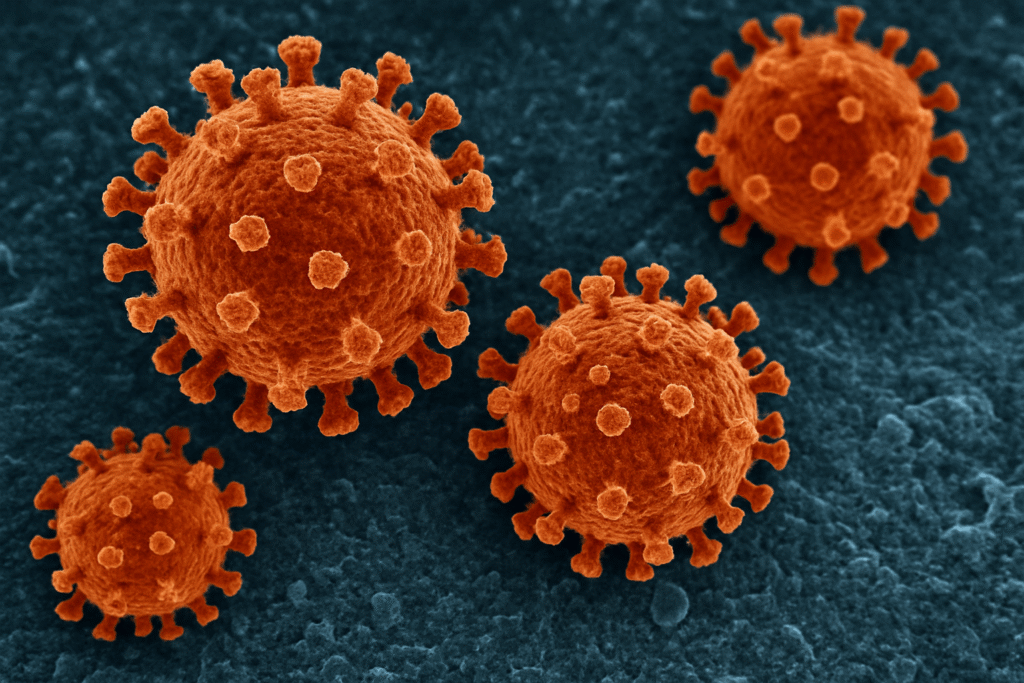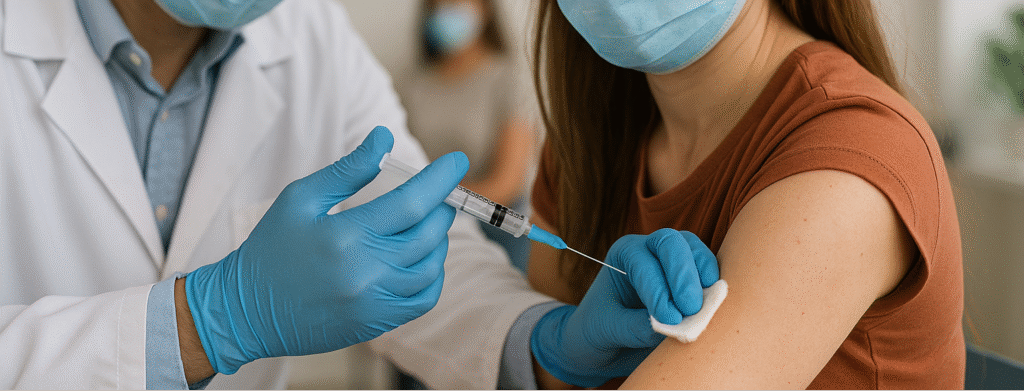COVID-19 is an infectious disease caused by the SARS-CoV-2 coronavirus. It first appeared in Wuhan, China in December 2019 and spread rapidly worldwide. Within three months, the World Health Organization (WHO) declared it a global pandemic.
While many people experience mild symptoms like fever and cough, others develop severe breathing problems that may require hospitalization. Because it can spread easily, COVID-19 quickly became one of the most impactful diseases in modern history.
The Virus and How It Spreads
The virus responsible for COVID-19, SARS-CoV-2, belongs to the coronavirus family. It is an RNA virus with a distinctive spike protein on its surface. These spikes allow it to attach to human cells—especially in the lungs and airways—making infection possible.
COVID-19 spreads mainly through:
- Respiratory droplets: When an infected person coughs, sneezes, or talks.
- Aerosols in the air: Tiny particles that can remain suspended indoors.
- Close contact: Handshakes, hugs, or crowded settings increase risk.
- Contaminated surfaces: Less common, but possible if viral particles are transferred by touch.
Environments like crowded gatherings, poorly ventilated rooms, and healthcare facilities pose the highest risk of transmission.

History of the COVID-19 Outbreak
- December 2019: First cases of unexplained pneumonia reported in Wuhan, China.
- January 2020: Scientists identified the novel coronavirus (SARS-CoV-2) as the cause.
- March 2020: WHO declared COVID-19 a pandemic as cases spread across the globe.
- 2020–2021: Countries experienced multiple waves of infection. New variants such as Alpha, Delta, and Omicron made the virus more contagious.
- Vaccines introduced: By late 2020, vaccines became available, helping reduce severe illness and death.
- 2022 onward: Widespread vaccination, natural immunity, and better treatments slowed the pandemic, but COVID-19 remains a global concern.
What are the Common Symptoms?
COVID-19 affects people differently. The most commonly searched and reported symptoms are:
- Fever and chills
- Cough or sore throat
- Shortness of breath
- Fatigue and muscle aches
- Loss of taste or smell
- Headache and nasal congestion
Some people never develop symptoms (asymptomatic) but can still spread the virus. Severe cases may progress to pneumonia, low oxygen levels, or organ complications.
How is COVID-19 diagnosed and tested?
COVID-19 is diagnosed through several types of tests:
- PCR tests: The most accurate, detecting viral genetic material.
- Rapid antigen tests: Provide results in minutes but are less sensitive.
- Antibody tests: Identify past infections by checking for immune response.
Treatment and Management
Most mild cases can be managed at home with rest, fluids, and over-the-counter fever relief. For moderate to severe illness, treatments may include:
- Antiviral medications such as remdesivir or paxlovid.
- Oxygen therapy for patients with low oxygen levels.
- Hospital and ICU care for critical cases.
Covid-19 Vaccination
Vaccines are the most effective tool in reducing severe illness and death. Different vaccine types are available:
- mRNA vaccines (Pfizer, Moderna)
- Viral vector vaccines (AstraZeneca, Johnson & Johnson)
- Inactivated virus vaccines (Sinovac, Sinopharm)
Booster doses are recommended to maintain immunity, especially for older adults and people with chronic conditions.

Prevention of Covid-19 infection
Prevention remains key to limiting the spread of COVID-19. Simple but effective steps include:
- Staying up to date with vaccines and boosters.
- Wearing masks in crowded or poorly ventilated places.
- Washing hands regularly with soap or sanitizer.
- Improving indoor ventilation.
- Testing and isolating when feeling unwell.
COVID-19 changed the way the world views health and disease prevention. By understanding the virus, its spread, and protective measures, we can continue to live safely while reducing risks for ourselves and our communities.
Disclaimer: This article is for informational purposes only. It is not a substitute for professional medical advice, diagnosis, or treatment. Always consult a qualified healthcare provider with any health concerns.
Source:
You may also interested in Diabetes


[…] You may also interested to read on Covid-19-Understanding the virus its spread and protection […]